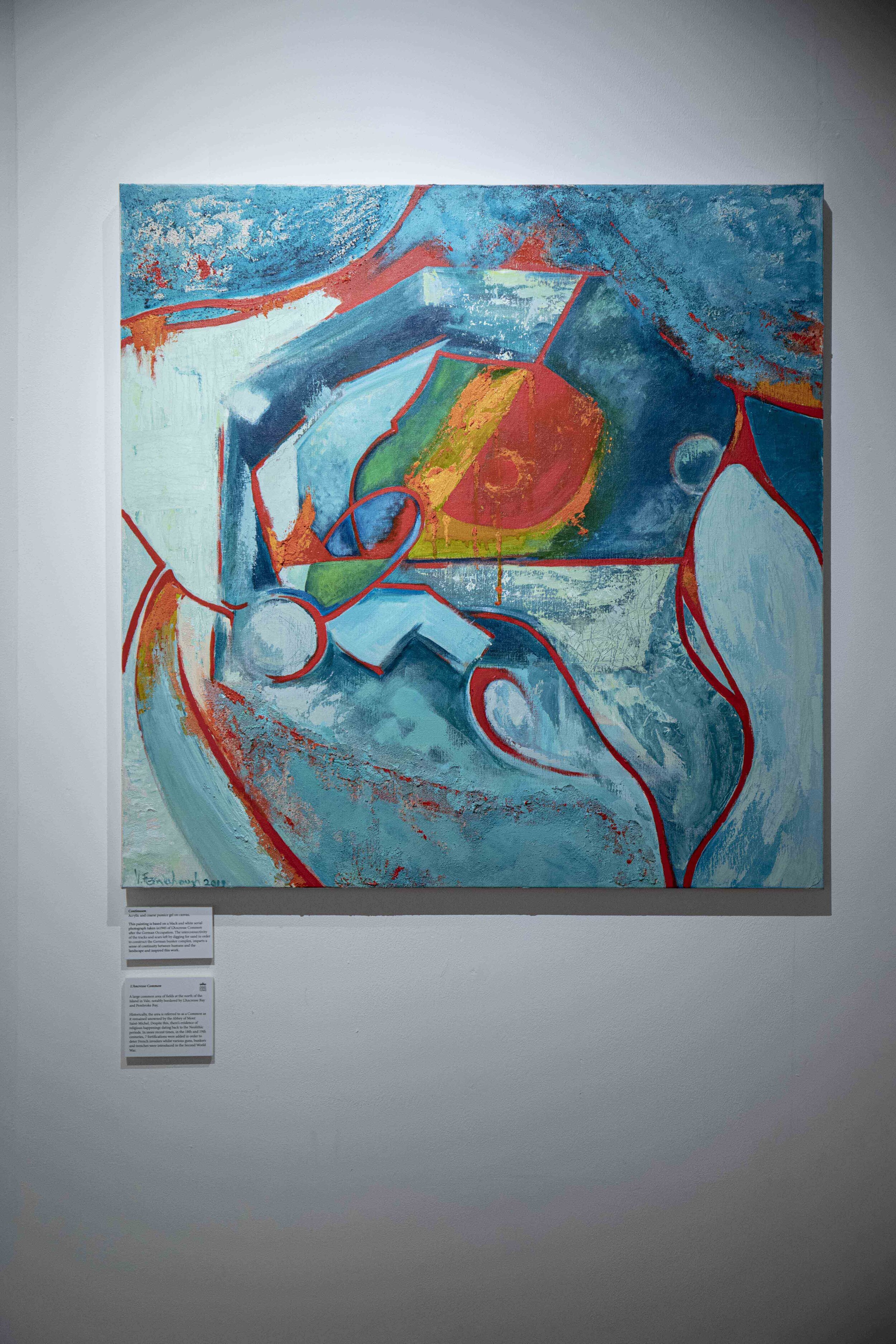Marks In The Landscape Exhibition
by Vivien Ferneyhough

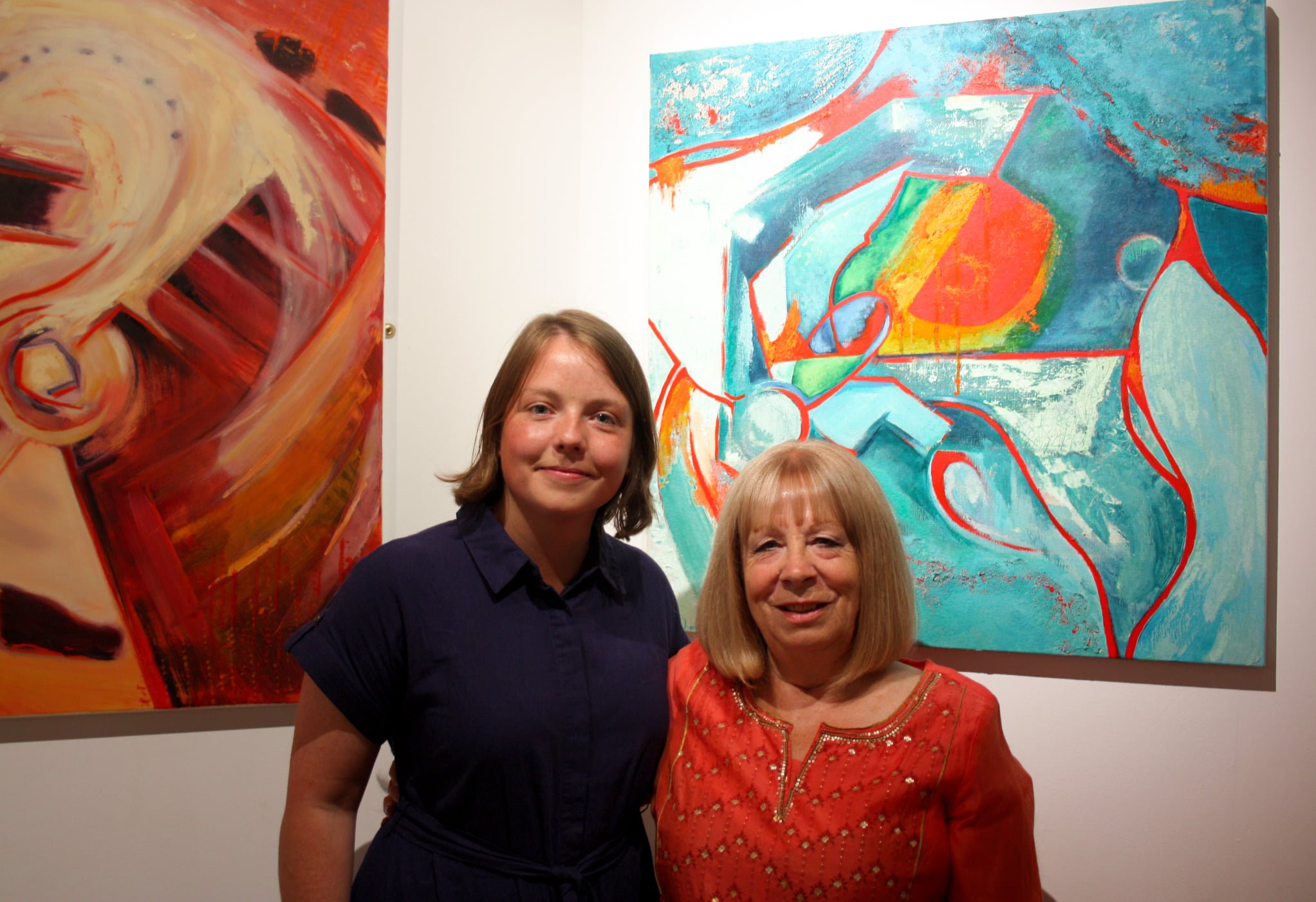

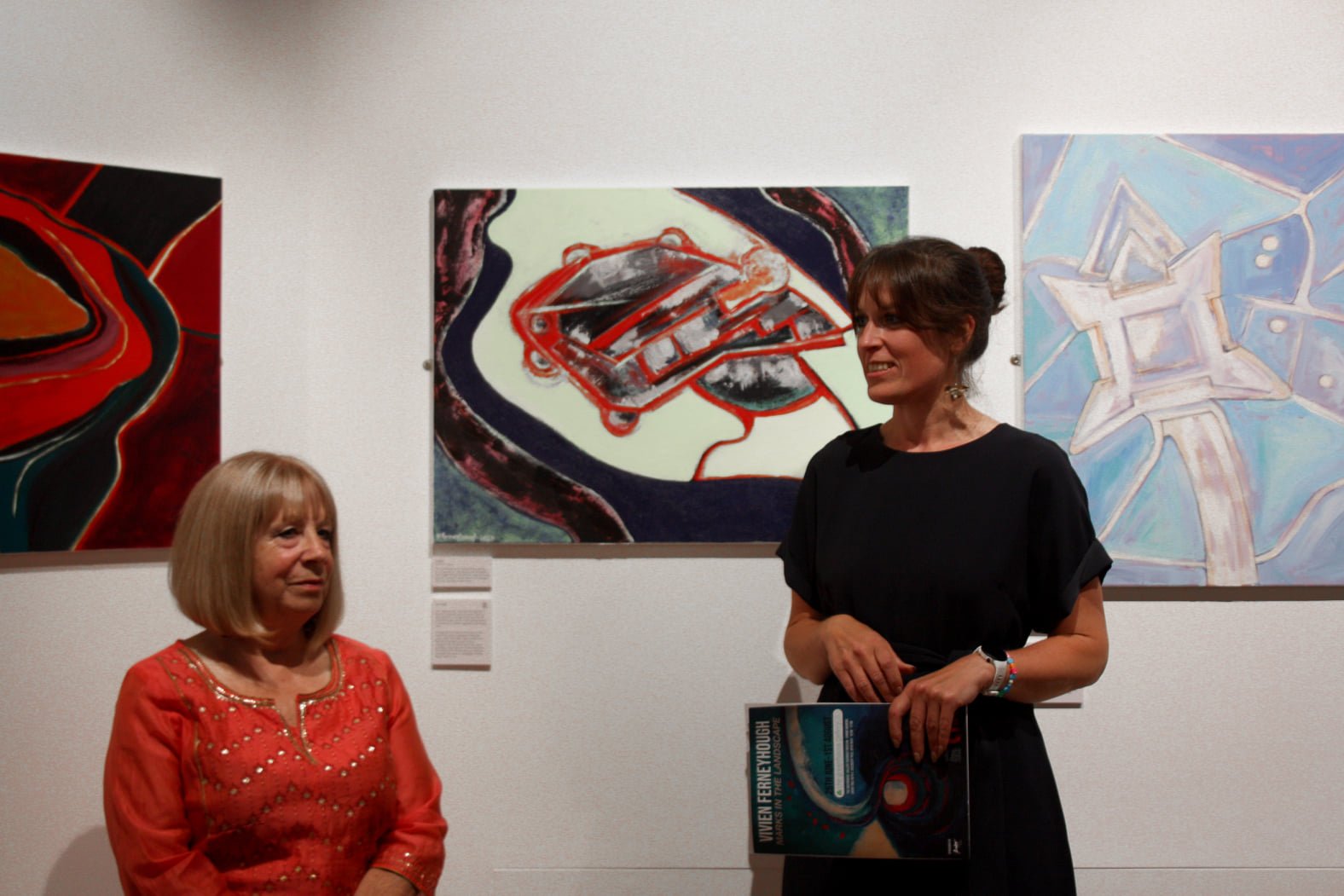

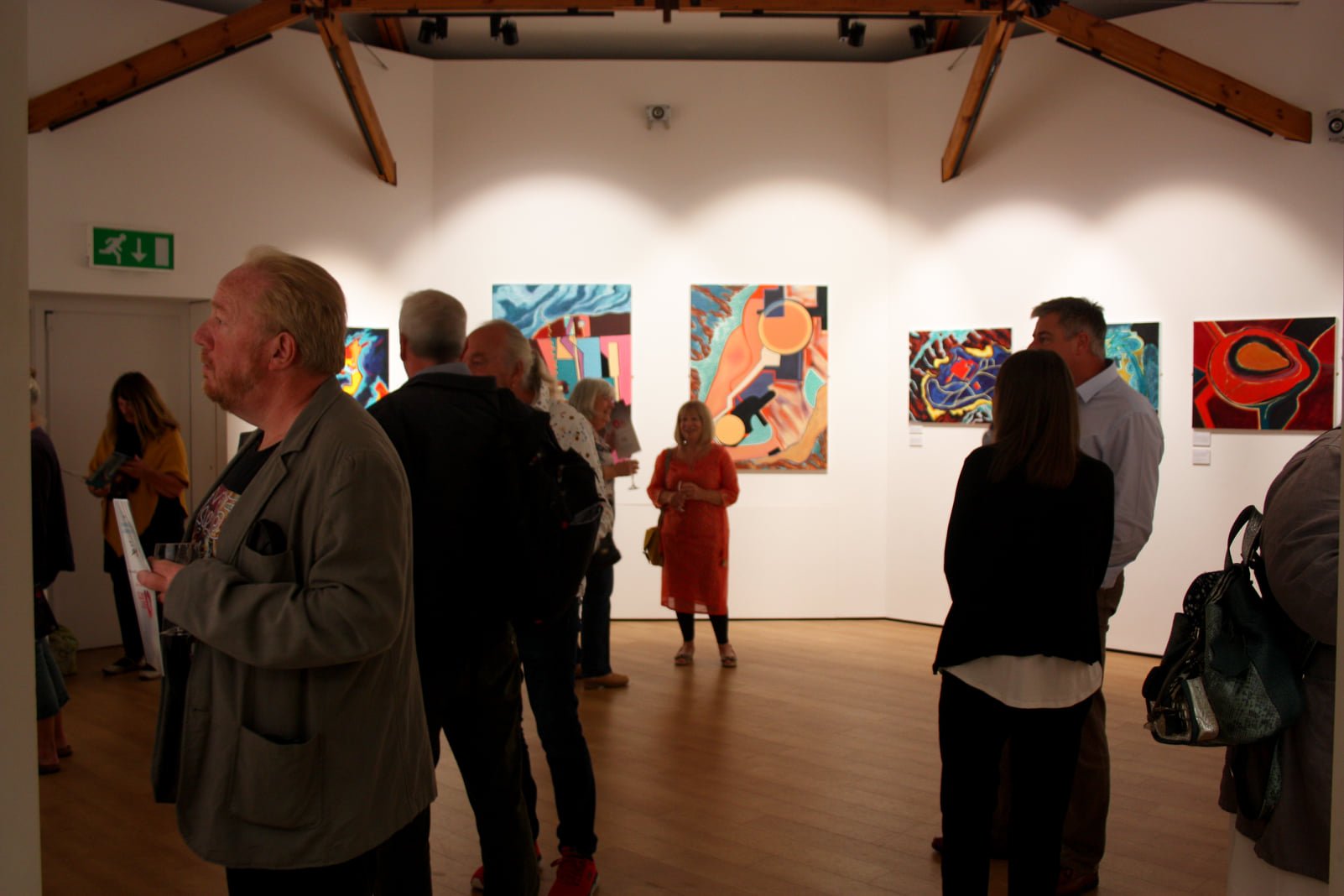










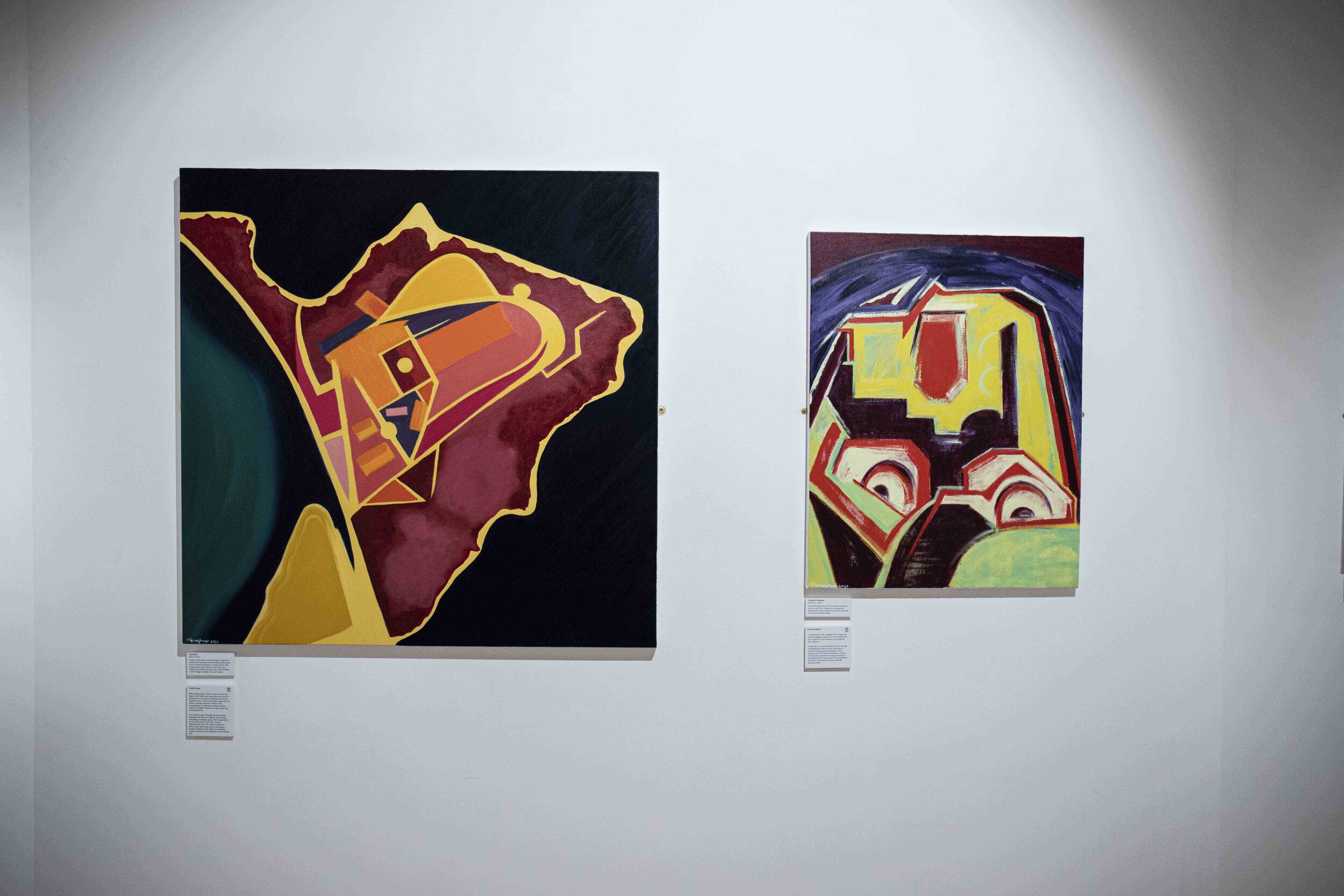



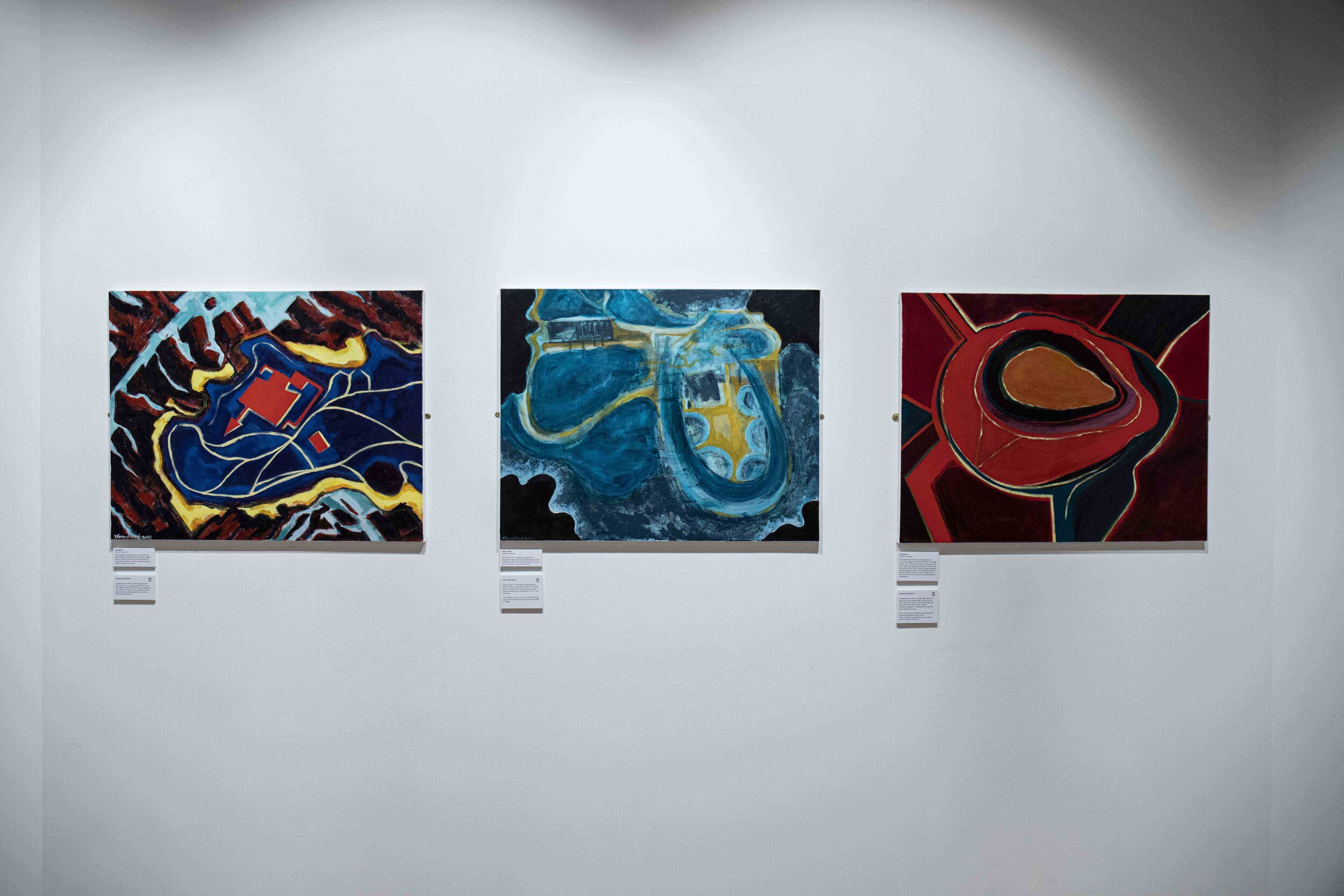

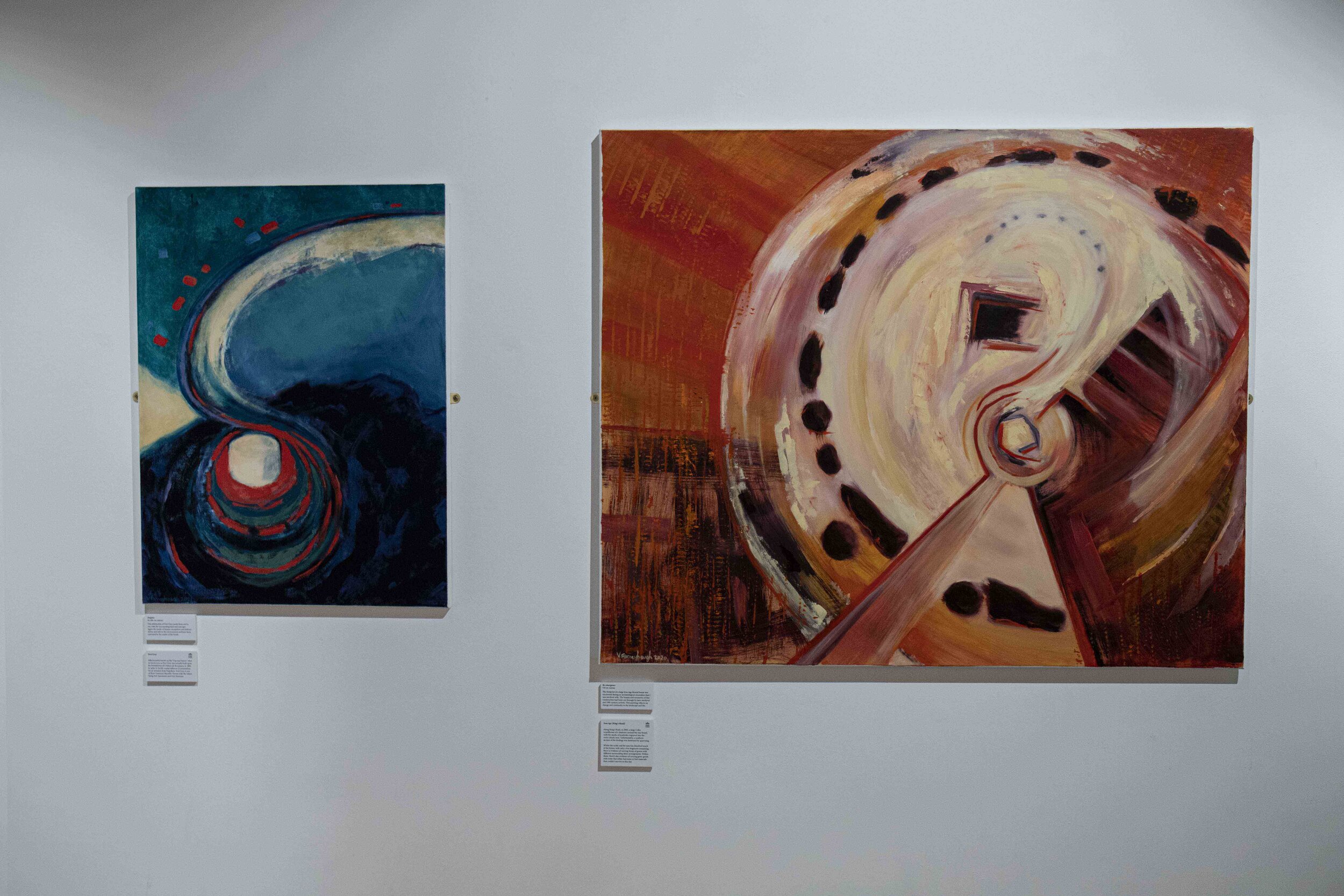
Vivien Ferneyhough
vivrexferneyhough@hotmail.com
I studied at Loughborough College of Art and Design in the mid 1960’s but it was not until I moved to Guernsey that I started to create art again. I also have a Post Graduate Certificate in The Archaeology of Standing Buildings from the De Montfort University Leicester.
After completing a degree in Art History and social history with the Open University where I gained First Class Honours, I began to paint and draw with a new sense of the importance of place and collective consciousness in society and how art reflects change and continuity through time..
I have taken part in several exhibitions in Guernsey and have also been a committee member, coordinator and Chair of the Guernsey Art Network., during this time I was involved in organising and curating art exhibitions.Recently I have been creating a series of paintings entitled “Marks in the Landscape “ for an upcoming solo exhibition at the Greenhouse Gallery in Candie Museum. At the moment I am exploring shapes created by the island rock formations and the rock art of pre-historic cultures. Life drawing is also one of the artistic genres that I find not only enjoyable but challenging. The human body in all its shapes and sizes can be interpreted in so many ways showing us our vulnerabilities and strenghs,physically and emotionally.
Marks In The Landscape
This exhibition draws together the three disciplines that I have studied; Art, Archaeology and History and they have inspired and motivated me to produce this body of work.
Moreover, this approach has enabled the creation of a multi faceted interpretation of the marks in the Guernsey landscape. I have used texture, colour and line to reflect an overall theme of continuity and change. This, together with the study of aerial photographs and my personal experience of archaeological investigation, has resulted in depictions on canvas of not only the shapes of the geological landscape, but also the impact that political, historical and social circumstances had on the forms and functions of the buildings and field systems that helped shape the landscape through time.
Political conflict or the perceived threat of invasion has remained a strong theme throughout the history of the island and I have included the marks left by Iron Age inhabitants of the island as a reminder that although technology and building practice may change, some social values do not. We share and shared the need to protect, shelter and defend our families and communities. The Vale Castle, Les Tranquesous and Kings Road are examples of how we have moved from pre-history through into the modern era by using and adapting the same prominent position in the landscape to survive.
Of course nature and the forces of nature have played a hugely significant role in shaping or impacting on ourselves and the environment; as we progress through time, it remains a constant driving force and our efforts to control or reclaim land for ourselves often fail. The stone, brick and concrete structures humans build eventually decay allowing nature to take back some of its territory; and in doing so changing our perception of the form and function of these marks in the landscape. By using strong, bold colours to indicate the power that is still present in some of these structures, and line and texture to make a contrast between the material structures and the natural elements, my intention is to convey a sense of tension and unease in some images and conversely a sense of harmony with nature and the ebb and flow of time through others. It has not been my intention to create what may be called “realistic” images, but rather my own perception of realism and I hope that my interpretation of the marks in the Guernsey landscape and the marks that I have made on the canvas will resonate in some way with you all.
My thanks go to Guernsey Arts for giving me this opportunity to exhibit my work and Art Foundation Guernsey for sponsoring the exhibition.
Vivien Ferneyhough
Artworks
Map of all the reprinted artworks and their locations.
1. Guardian
Oil on canvas.
Castle Cornet makes and has made an impressive mark on the landscape and embodies political and socio-economic strength in a material form. The image on the canvas seeks to convey the rich history and architectural diversity of this fortified castle through
strength of line and colour.
3. Ghost Star
Acrylic and graphite on canvas.
Before the development of Fort George a late 18th century Star Fort stood within the area now known as the Citadel. The patterns created by the surrounding fields echo the strong image of the fort while the pastel colours of the palette indicate its transience.
5. Wild Outpost
Acrylic on canvas.
Fort Pezeries sits at the junction where the west coast meets the south coast and is the most southerly north facing point on Guernsey. This star fort with its sweeping causeway epitomises the conflict between the material world and the natural world. It battles the elements as it once was intended to battle invaders.
7. Isolation
Acrylic on canvas.
Bearing the marks of habitation since pre-history the tidal island of Lihou has been a place of refuge, meditation and industry. This image is based on a 1945 aerial photograph after the ravages of the German occupation. It stands alone and mystical once again within the constant sea.
9.Connectivity
Oil on canvas.
Fort Hommet connects Napoleonic architectural elements to a World War 2 German concrete complex amid a rugged red granite outcrop. The geometric elements in this painting are depicted as weathering into the landscape. As the territorial and political conflicts that lay behind the building of these structures slowly disappear from our consciousness, so do the structures sit more easily in the landscape.
11. Continuum
Acrylic and coarse pumice gel on canvas.This painting is based on a black and white aerial photograph taken in1945 of L’Ancresse Common after the
German Occupation. The interconnectivity of the tracks and scars left by digging for sand in order to construct the German bunker complex, imparts a sense of continuity between humans and the landscape and inspired this work.
13. Revival
Acrylic on canvas.
Fort Doyle has undergone many changes since its construction in the early 19th century. The overhead image of the fort led me to explore and develop the architectural and natural shapes in what became a vibrantly colourful and rhythmic way: a revival of “pop Art”.
15. Suspension
Acrylic on canvas.
The Chateau des Marais has a long history of occupation dating from the late Neolithic to the 20th century. The 1204 Motte and Bailey construction has left a mark in the landscape that defines and informs this painting. The “Motte” (mound) hangs suspended over the marshy terrain, while the platform that once held the “Bailey” (walled area with a keep) sits on the summit. The moat surrounds and delineates the composition.
Re-emergence
Oil on canvas.
The footprint of a large Iron Age Round house was uncovered during an archaeological excavation that I was involved with.
The beauty and symmetry of this construction had been cut through by later medieval and 19th century activity. This painting reflects on change and continuity in the landscape and life.
2. Geometric Fantasia
Acrylic on canvas.
This painting based on Clarence Battery draws on Art Deco and “jazz” influences to convey the architectural elements that
dominate and mark this once heavily fortified clifftop.
4. Aftermath
Oil on canvas.
This painting is based on a black and white aerial photograph of Icart headland taken in 1945. The field boundaries together with the zig zag trench lines and bunker footprints sit together in an uneasy pattern while the constant sea ebbs and flows.
6. Enigma
Acrylic on canvas.
This abstraction of Fort Grey swirls from and is one with the surrounding land and seascape. Again the marks of human occupation and defence define and inform the environment and have been conveyed by the marks of the brush.
8. Circularity
Acrylic on canvas.
Mirus Battery 4 lies hidden in the landscape. Its circular form not only represents its concrete strength but also is evocative of time and space. The marks made on the canvas are intended to convey a sense of movement through time.
10. Stronghold
Acrylic on canvas.
The strength and dominance of colour and form in this painting was inspired by the strong, rugged abstract shapes of the rocks and fortifications of Grand Rocque Battery and the meandering tracks made by humans over time.
12. Study in Blue
Acrylic on canvas.
The form of Fort Le Marchant inspired this atmospheric study. The layering of blue hues on the underlying yellow ochre notes is intended to create a sense of transience and passage of time.
14. Sentinel
Acrylic on canvas.
Vale Castle stands on the summit of what was once an Iron Age hill fort. The
structures on the summit have changed through the millennia while the mound remains a constant. It stands proud in the landscape while time and motion swirl around.
16. Settlement
Acrylic on canvas.
This late Iron Age
settlement (150BC-50AD) revealed itself again as crop marks during a particularly dry summer. The abstract forms, colours and textures re-interpret and convey the vulnerability and strength of this small community of Celts within the landscape.
Download the exhibition catalog.
Download location guide

